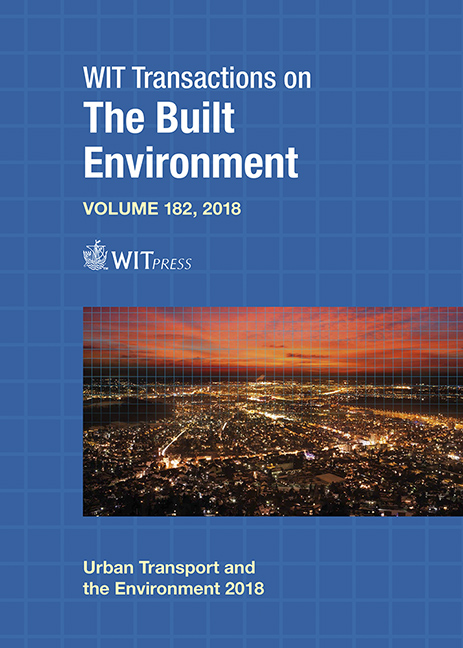METHODOLOGY TO DEVELOP URBAN FREIGHT REGULATORY PLANS: CIUDAD JUAREZ CASE STUDY
Price
Free (open access)
Transaction
Volume
182
Pages
11
Page Range
27 - 37
Published
2019
Paper DOI
10.2495/UT180031
Copyright
WIT Press
Author(s)
DAVID SALGADO, RAFAEL M. ALDRETE, GABRIEL A. VALDEZ-CENICEROS, JEFF SHELTON
Abstract
The industrial and economic activity in Mexican cities along the United States (US)–Mexico border increased significantly with the establishment of North American Free Trade Agreement (NAFTA) on January 1, 1994. As a result, these cities experienced accelerated growth in population and economic activity. This has subsequently led to a high demand in freight services for manufacturing plants, local businesses, and international trade necessities resulting in mobility and environmental problems. The objective of this paper is to describe the methodology followed in the development of the Ciudad Juarez Urban Freight Regulatory Plan along with the strategies proposed. The Plan is embraced by agencies and organizations involved and aim to alleviate problems associated with uncontrolled urban freight flows, as well as optimize these flows in harmony with other transportation modes (passenger vehicles, bicycles, and pedestrians). The strategies proposed are based on the best international practices in conjunction with the results of the traffic diagnostic performed and the input of local agencies and organizations. This paper argues that this participatory approach can be successfully used by practitioners developing urban freight improvement plans in developing countries worldwide in general, as well as in other Mexican cities located on the US–Mexico border in particular.
Keywords
urban freight, Mexican border cities, border crossing, freight management, Ciudad Juarez





